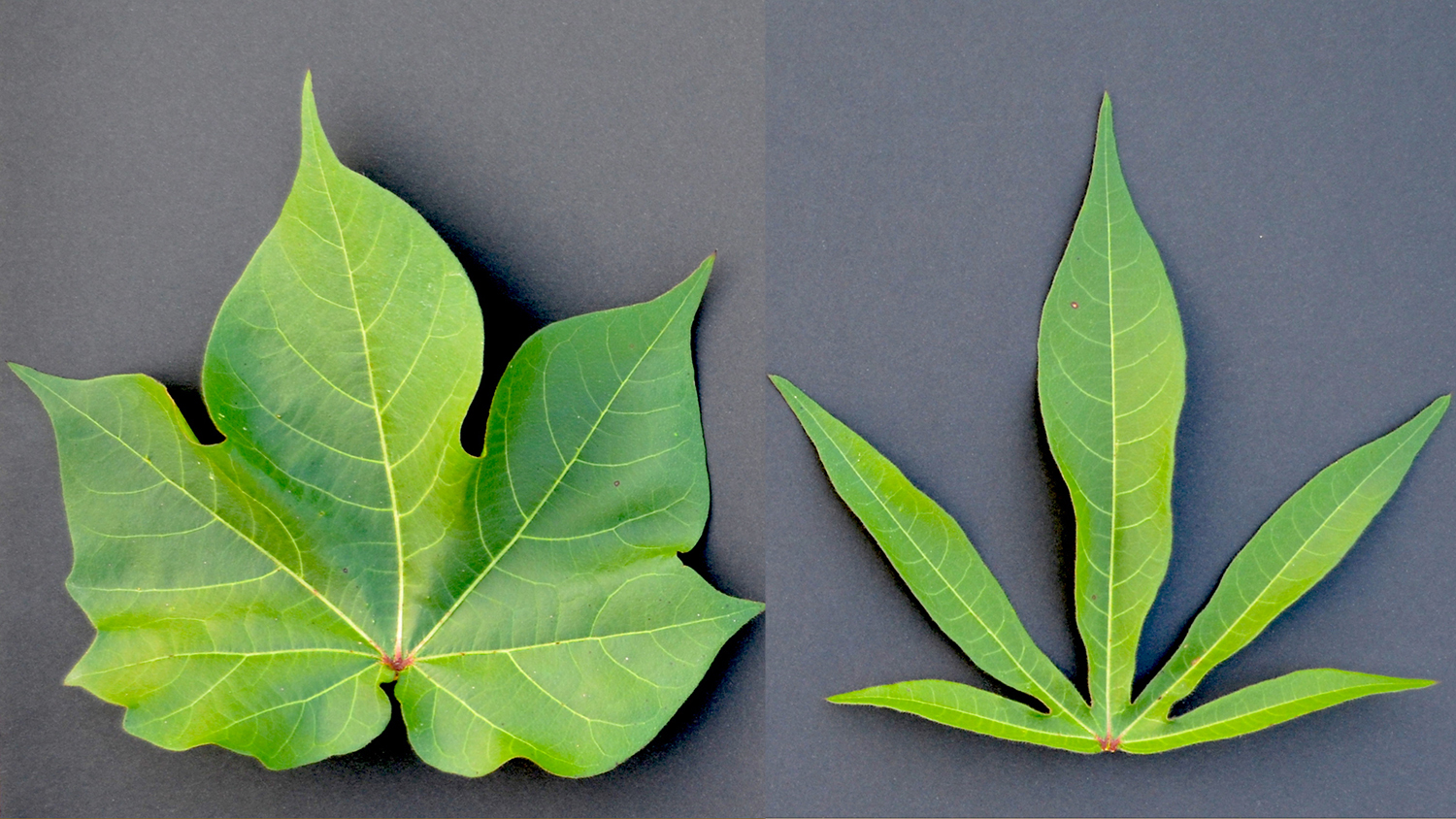Researchers Crack Genetic Code Determining Leaf Shape in Cotton

For Immediate Release
Researchers know that the variation in leaf shapes can mean big differences in a farmer’s bottom line. Now, a new discovery gives plant breeders key genetic information they need to develop crop varieties that make the most of these leaf-shape differences.
In a paper published Dec. 20 in the Proceedings of the National Academy of Sciences, NC State researchers and colleagues from the Danforth Plant Science Center, the U.S. Department of Agriculture and Cotton Incorporated describe how they used genomic and molecular tools to find the location of the DNA sequence that determines major leaf shapes in upland cotton.
The researchers also describe how they manipulated the genetic code to alter the shape of a cotton plant’s leaves in potentially beneficial ways.
This discovery represents a significant step toward developing cotton varieties that produce higher yields at less cost to the farmers, said Vasu Kuraparthy, an associate professor with NC State’s Department of Crop and Soil Sciences and the project’s principal investigator.
Scientists have recognized that cotton plants with leaves that have five deep lobes, like the leaves of the okra plant, offer advantages to farmers over what researchers refer to as “normal” leaves. Dr. Ryan Andres, a postdoctoral researcher who worked in Kuraparthy’s lab while he was a graduate student, said the so-called “okra” leaf cottons are less susceptible to boll rot than the stably yielding “normal” leaf cotton varieties.
The okra leaves also allow a spray to be more evenly dispersed across a plant and are associated with higher rates of flowering and earlier rates of maturity in cotton, Andres added.
To determine if they’d found the DNA sequence that controlled major leaf shapes in cotton, researchers infected okra-leaf plants with a modified virus that silenced the target gene. That led to a temporary production of normal leaves until the plants overcame the experimental virus and reverted to okra leaf shape.
Kuraparthy and Andres said they hope that this leaf architecture leads to an ideal cotton cultivar, or ideotype, capable of combining the advantages of the two leaf shapes.
“We were able to create our ideotype but only in a transient fashion. One day we want to able to do it in a heritable manner, and the first step in that is finding the gene and proving that this is the gene and these are the polymorphisms in the gene that cause these changes,” Kuraparthy said. “This research does that.”
– shore –
Note to editors: The study abstract follows.
“Modifications to a LATE MERISTEM IDENTITY-1 gene are responsible for the major leaf shapes of Upland cotton (Gossypium hirsutum L.)”
Authors: Ryan Andres, Viktoriya Coneva, Margaret H. Frank, John R. Tuttle, Luis Fernando Samayoa, Sang-Won Han, Baljinder Kaur, Linglong Zhu, Hui Fang, Daryl T. Bowman, Marcela Rojas-Pierce, Candace H. Haigler, Don C. Jones, James B. Holland, Daniel H. Chitwood, Vasu Kuraparthy
Published: Dec. 20, Proceedings of the National Academy of Sciences
Abstract: Leaf shape varies spectacularly among plants. Leaves are the primary source of photo-assimilate in crop plants and understanding the genetic basis of variation in leaf morphology is critical to improving agricultural productivity. Leaf shape played a unique role in cotton improvement, as breeders have selected for entire and lobed leaf morphs resulting from a single locus, okra (L-D1), which is responsible for the major leaf shapes in cotton. The L-D1 locus is not only of agricultural importance in cotton, but through pioneering chimeric and morphometric studies it has contributed to fundamental knowledge about leaf development. Here we show that an HD-Zip transcription factor homologous to the LATE MERISTEM IDENTITY1 (LMI1) gene of Arabidopsis is the causal gene underlying the L-D1 locus. The classical okra leaf shape allele has a 133-bp tandem duplication in the promoter, correlated with elevated expression, while an 8-bp deletion in the third exon of the presumed wild-type normal allele causes a frame-shifted and truncated coding sequence. Our results indicate that sub-okra is the ancestral leaf shape of tetraploid cotton that gave rise to the okra allele and that normal is a derived mutant allele that came to predominate and define the leaf shape of cultivated cotton. Virus-induced gene silencing (VIGS) of the LMI1-like gene in an okra variety was sufficient to induce normal leaf formation. The developmental changes in leaves conferred by this gene are associated with a photosynthetic transcriptomic signature, substantiating its use by breeders to produce a superior cotton ideotype.
- Categories:


